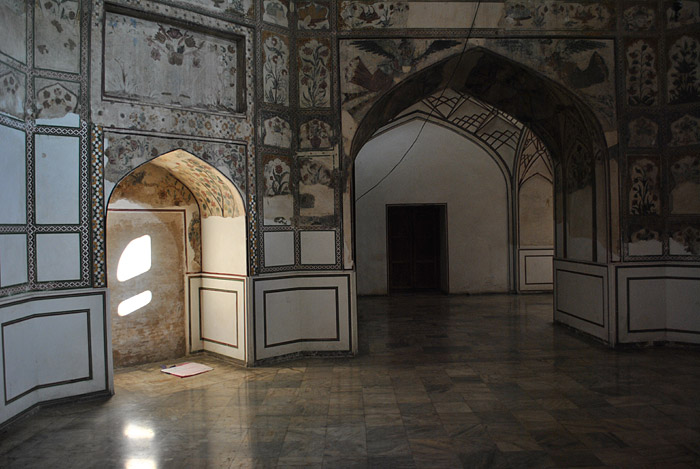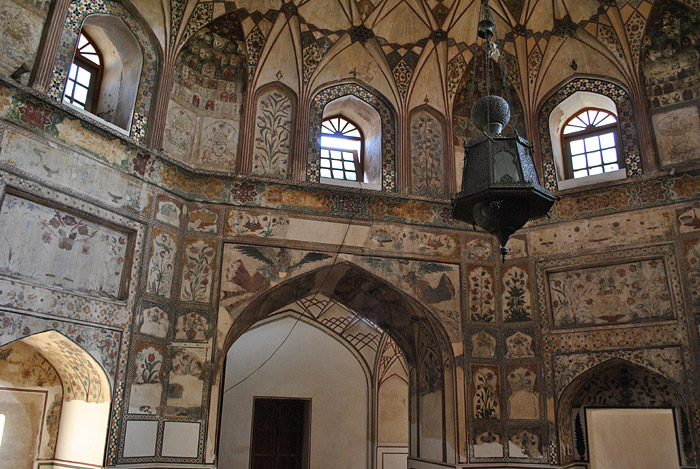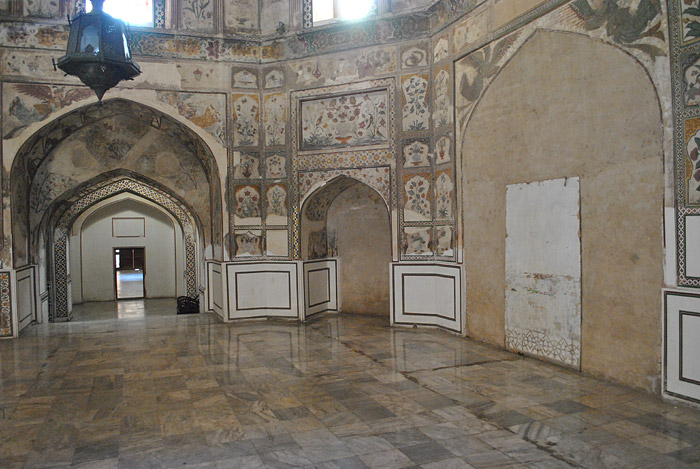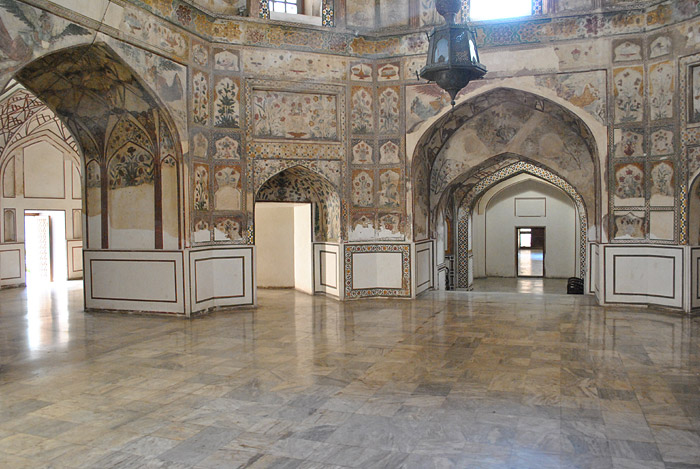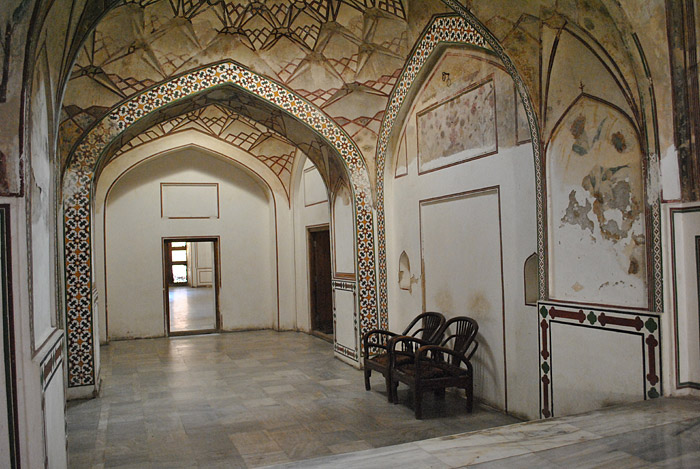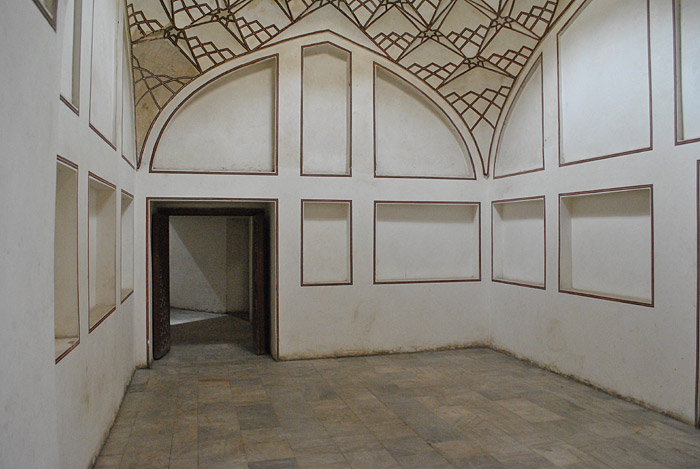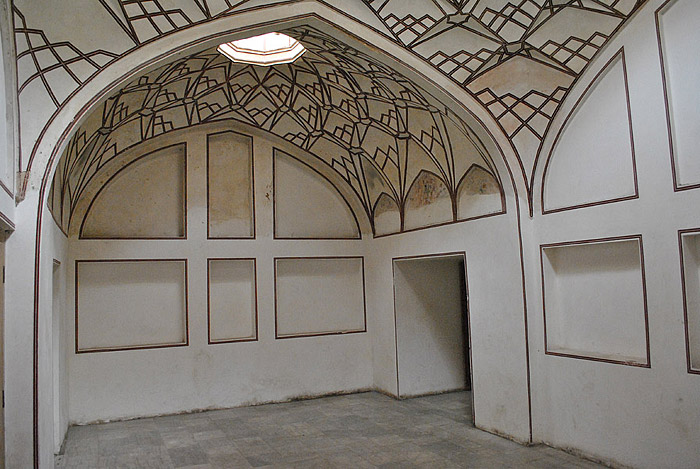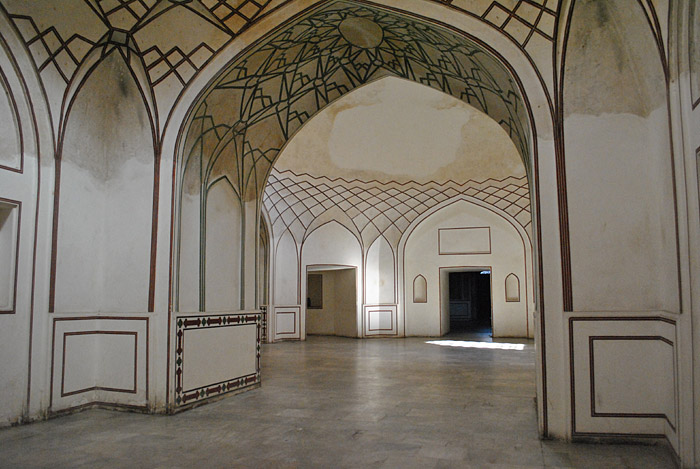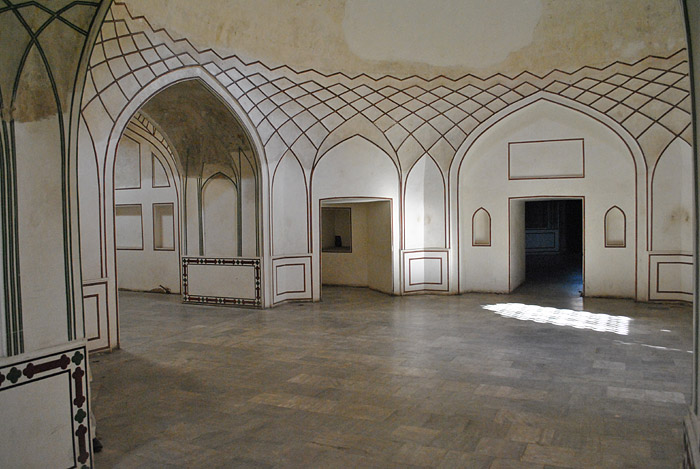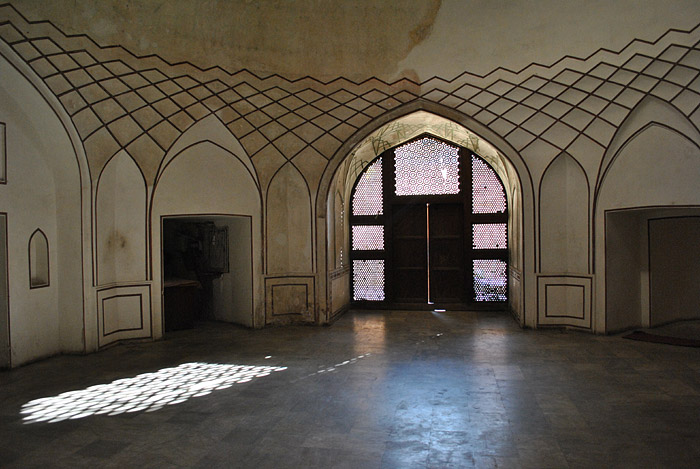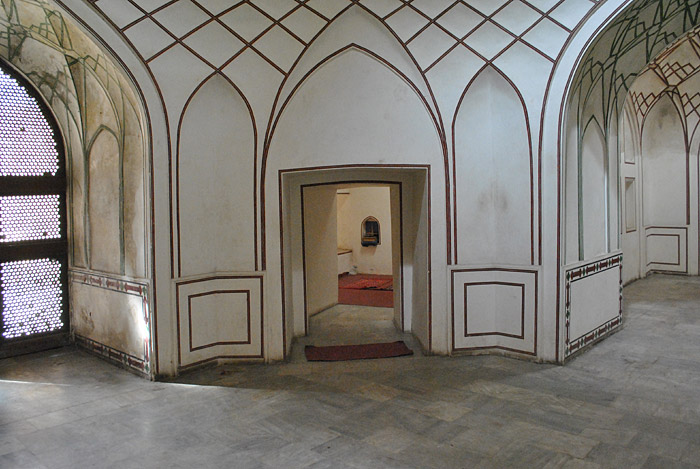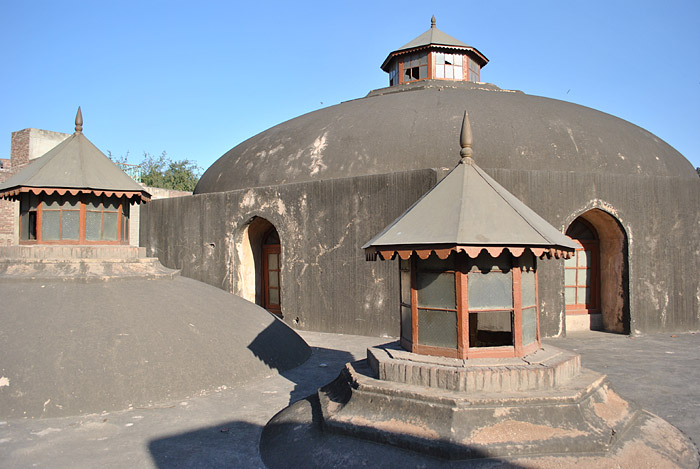Shahi Hammam Bathhouse
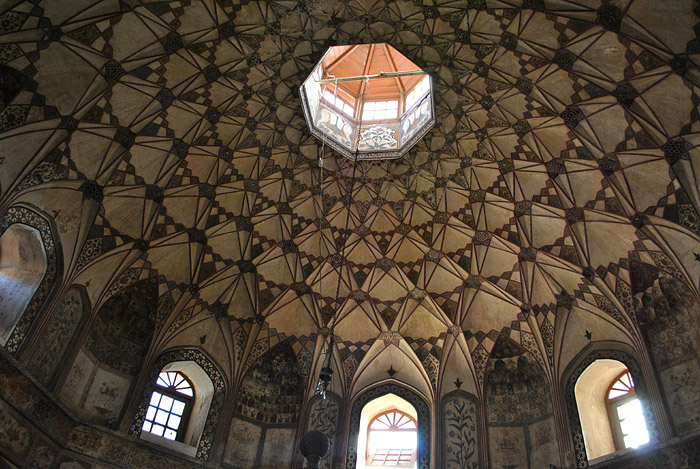
La casa de baños Shahi Hammam, también conocida como Hammam Wazir Khan, es la única casa de baños de este tipo que queda en Lahore. Durante la era mogol, los hammams (baños públicos) se introdujeron según los modelos persas y florecieron durante un tiempo, aunque su popularidad nunca alcanzó el nivel mantenido en Persia, ya que los baños públicos no eran una institución cultural establecida en el Punjab. Hoy en día, el Shahi Hammam ya no se utiliza y se ha convertido en un centro de información turística.
El hammam fue establecido por primera vez en 1634 por el jeque Ilmuddin Ansari, quien lo construyó justo dentro de la Puerta de Delhi a lo largo del camino a la mezquita de Wazir Khan, en construcción en ese momento. Contenía instalaciones separadas para que hombres y mujeres se bañaran y también incluía comodidades como una cámara de recepción y una pequeña sala de oración. De acuerdo con el precedente persa, prácticamente todo el hammam estaba iluminado desde arriba con pequeñas aberturas en el techo que también ayudaban a la ventilación al permitir que el aire caliente saliera de las instalaciones. Dado que las paredes tenían relativamente pocas ventanas, los comerciantes pudieron establecer tiendas directamente contiguas al hammam. Aunque el hammam ya no está en funcionamiento, las tiendas comerciales han permanecido abiertas y aún hoy dificultan el discernimiento de las fachadas del hammam.
El interior del hammam está prácticamente intacto y conserva frescos que datan de la época mogol. Desafortunadamente, las instalaciones de baño reales se rellenaron y se colocaron en mosaico a mediados de la década de 1990 cuando el edificio fue convertido brevemente a otro propósito por sus propietarios privados. En los últimos años, el sitio ha sido adquirido por el Centro de Información Turística de Lahore y se está conservando. Aproximadamente el 75% del área interior está ahora abierta al público.
The Shahi Hammam bathhouse, also known as Hammam Wazir Khan, is the only remaining bathhouse of its type in Lahore. During the Mughal era, hammams (public baths) were introduced based on Persian models and flourished for a time, though their popularity never reached the level maintained in Persia as public baths were not an established cultural institution in the Punjab. Today, the Shahi Hammam is no longer in use and has been converted into a tourist information center.
The hammam was first established in 1634 by Sheikh Ilmuddin Ansari who built it just inside the Delhi Gate along the path to Wazir Khan mosque, under construction at the time. It contained separate facilities for men and women to bathe and also included amenities such as a reception chamber and a small prayer room. In keeping with Persian precident, virtually the entire hammam was illuminated from above with small openings on the roof which also aided ventilation by allowing hot air to flow out from the facility. Since the walls had relatively few windows, merchants were able to set up shops directly abutting the hammam. Although the hammam is no longer in operation, the merchant shops have remained open and even today make it difficult to discern the facades of the hammam.
The interior of the hammam is mostly intact and preserves frescos dating from the Mughal era. Unfortunately, the actual bathing facilities were filled in and tiled over in the mid 1990s when the building was briefly converted to another purpose by its private owners. In recent years the site has been acquired by the Tourist Information Center of Lahore and is being conserved. About 75% of the interior area is now open to the public.
